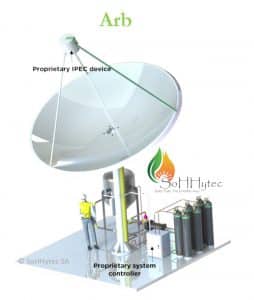Reducing environmental pollution is becoming ever more important. This is especially true now, seeing how pollution has worsened the impact of the recent Covid-19 virus outbreak. As a result, the search for alternative fuels is no longer just a building block for long-term climate action but vital to public health today.
Although solar energy is intermittent by nature, converting it into chemical energy via photoelectrochemical (PEC) processes is a viable path to producing and storing renewable fuel. To be successful, however, any such approach needs to be efficient, robust, cost competitive and sustainable.
Studies show that photoelectrochemical devices running at great optical concentration and current density can meet all the requirements for producing solar fuel at the point of use [1]. They do so despite including expensive but high-performance photoabsorbing materials and catalysts. The photoactive and electrochemical component that is part of these systems allows for not only greater current densities but highly efficient equipment [2, 3]. SoHHytec, a spin-off from Swiss-based EPFL’s Laboratory of Renewable Engineering Science and Engineering, has been developing a cogeneration system to produce cost-effective renewable hydrogen, electricity and heat on-site. It uses innovative, patented technology to concentrate solar energy onto a thermally and electrically integrated photoelectrochemical device (IPEC).
Called Arb, SoHHytec’s product runs on sunlight and water alone. It turns (concentrated) solar energy into fuel through PEC water splitting and produces electricity and heat at the same time. It shows both high solar-to-fuel and solar-to-electric efficiencies, works at unprecedented power and current densities and offers cost-effective fuel and power. Moreover, it has potential to remain in operation for a long time to come.
The most common methods for producing solar hydrogen employ either PECs or PV systems plus electrolyzers (EC). Conventional photoelectrochemical pathways have severe limitations, a result of their semiconductor-electrolyte interfaces. However, approaches based on the PV plus EC method (which omits the semiconductor-electrolyte interface) incur significant losses stemming from their electrical connections and heat production. Additionally, all photoabsorbers capture only specific wavelengths, i.e., convert merely a part of the incoming sunlight into usable energy, while the rest is usually wasted as heat. Current-generation solar panels do not use this waste heat because of an implied increase in system complexity. This means that PV plus EC pathways cannot benefit from it either.
…
read more in H2-international August 2020
Authors:
Dr. Saurabh Tembhurne, SoHHytec, Switzerland
Professor Sophia Haussener, EPFL, Switzerland

























0 Comments